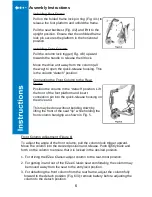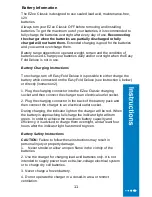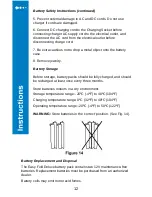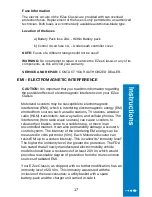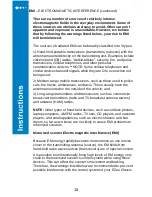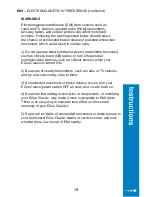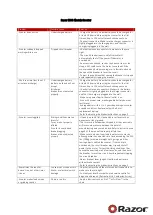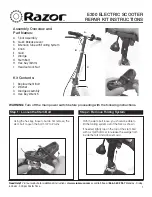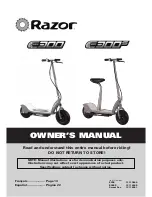
EMI
– ELECTROMAGNETIC INTERFERENCE (continued)
There are a number of sources of relatively intense
electromagnetic fields in the everyday environment. Some of
these sources are obvious and easy to avoid. Others are not
apparent and exposure is unavoidable. However, we believe
that by following the warnings listed below, your risk to EMI
will be minimized.
The sources of radiated EMI can be broadly classified into 3 types:
1) Hand-held portable transceivers (transmitters-receivers) with the
antenna mounted directly on the transmitting unit. Examples include
citizens band (CB) radios, "walkie-talkies”, security, fire, and police
transceivers, cellular telephones, and other personal
communication devices. **NOTE: Some cellular telephones and
similar devices transmit signals while they are ON, even when not
being used;
2) Medium-range mobile transceivers, such as those used in police
cars, fire trucks, ambulances, and taxis. These usually have the
antenna mounted on the outside of the vehicle; and
3) Long-range transmitters and transceivers, such as commercial
broad-cast transmitters (radio and TV broadcast antenna towers)
and amateur (HAM) radios.
NOTE:
Other types of hand-held devices, such as cordless phones,
laptop computers, AM/FM radios, TV sets, CD players, and cassette
players, and small appliances, such as electric shavers and hair
dryers, so far as we know, are not likely to cause EMI problems to
motorized scooters.
Motorized scooter Electromagnetic Interference (EMI)
Because EM energy rapidly becomes more intense as one moves
closer to the transmitting antenna (source), the EM fields from
hand-held radio wave sources (transceivers) are of special concern.
It is possible to unintentionally bring high levels of EM energy very
close to the motorized scooter’s control system while using these
devices. This can affect the scooter’s movement and braking.
Therefore, the warnings listed below are recommended to pre-vent
possible interference with the control system of your EZee Classic.
18



